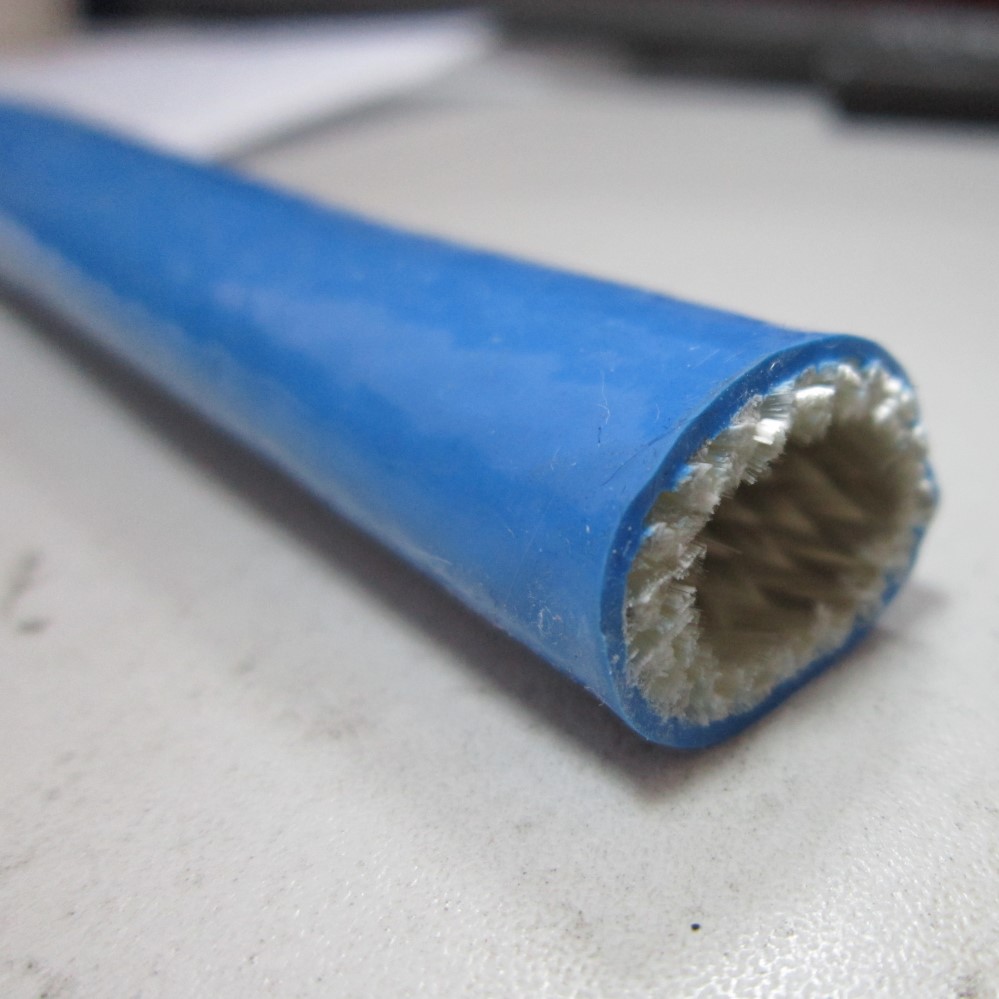Selezionare il miglior manicotto ignifugo in fibra di vetro rivestito in silicone per una protezione termica e una durata ottimali implica considerare diversi fattori. Ecco una guida per aiutarti a scegliere quello giusto:
1. Resistenza alla temperatura
-
Temperatura operativa: controllare la temperatura massima di funzionamento continuo che il manicotto può sopportare. Le maniche ignifughe in fibra di vetro rivestite in silicone di alta qualità resistono in genere a temperature continue fino a 260 °C (500 °F).
-
Temperatura di picco: assicurarsi che il manicotto possa sopportare temperature di picco intermittenti. Alcuni possono resistere fino a 2000°F (1093°C) per brevi periodi.
2. Qualità dei materiali
-
Nucleo in fibra di vetro: assicurarsi che il manicotto abbia un nucleo in fibra di vetro di alta qualità che fornisce isolamento termico e mantiene l'integrità strutturale sotto calore.
-
Rivestimento in silicone: il rivestimento in silicone deve essere spesso e applicato in modo uniforme, offrendo ulteriore protezione termica, resistenza all'abrasione e durata.
3. Taglia e vestibilità
-
Diametro interno: misurare il diametro dei tubi flessibili, dei cavi o delle tubazioni da proteggere e scegliere un manicotto con un diametro interno appropriato. Dovrebbe adattarsi perfettamente senza essere troppo stretto.
-
Lunghezza: assicurarsi di avere la lunghezza corretta della manica per l'applicazione, considerando l'eventuale lunghezza extra necessaria per pieghe o svolte.
4. Flessibilità e facilità di installazione
-
Flessibilità: Scegli un manicotto che rimanga flessibile in varie condizioni di temperatura per una facile installazione e manutenzione.
-
Meccanismo di chiusura: alcune maniche sono dotate di chiusure a strappo o cerniere per facilitare l'installazione attorno ai gruppi esistenti senza scollegarli.
5. Resistenza ambientale
-
Resistenza chimica: verificare se il manicotto è resistente a oli, carburanti, fluidi idraulici e altri prodotti chimici con cui potrebbe entrare in contatto.
-
Resistenza agli agenti atmosferici: assicurarsi che la custodia sia resistente ai raggi UV e possa resistere all'esposizione agli elementi se utilizzata in ambienti esterni.
6. Certificazioni e standard
-
Standard di settore: cerca custodie che soddisfino gli standard e le certificazioni di settore pertinenti, come le specifiche ISO, SAE o MIL.
-
Resistenza alla fiamma: verificare che il manicotto sia certificato per la resistenza alla fiamma secondo standard come UL 1441 o MSHA, DIN5510-2, EN45545-2.
7. Reputazione del marchio e recensioni
-
Reputazione del marchio: scegli prodotti di produttori rinomati noti per qualità e affidabilità.
-
Recensioni dei clienti: leggi le recensioni e le valutazioni dei clienti per valutare le prestazioni e la durata della manica nelle applicazioni del mondo reale.
8. Costo rispetto al valore
-
Costo: sebbene il costo sia un fattore, non scendere a compromessi sulla qualità. Investire in una custodia di alta qualità può far risparmiare denaro a lungo termine prevenendo danni alle apparecchiature.
-
Valore: considera il valore complessivo, inclusa la longevità, le prestazioni e la protezione che la custodia fornisce.
Considerando la resistenza alla temperatura, la qualità dei materiali, le dimensioni, la flessibilità, la resistenza ambientale, le certificazioni, la reputazione del marchio e i costi, puoi selezionare la migliore manica ignifuga in fibra di vetro rivestita in silicone per le tue esigenze. Assicurati di dare la priorità ai requisiti specifici della tua applicazione per ottenere una protezione termica e una durata ottimali.



